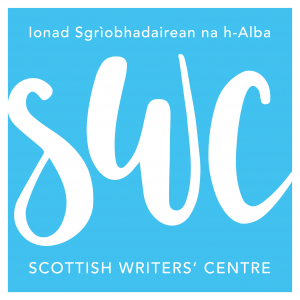On 4th of July the SWC welcomed Morelle Smith and George Colketto to the CCA Clubroom for an event based on how water inspires poetry. These two writers shared stories about their creative processes, the locations and events that inspired them, and the place water holds in their work.

Sally Evans introduced the evening’s discussion, indicating an exercise sheet she had prepared containing prompts for audience members who wished to write water-inspired poetry themselves. Prompts were included from poets across the literary canon, from classic, epic poets like Homer to modernist greats like Yeats. The sheet was an opportunity to interact with the theme of the day, as well as a means of highlighting water’s prevalence as a poetic inspiration throughout literary history.

First up was Morelle Smith, whose poetry collection, Shaping the Water Path, provides a sweeping exploration across the UK and Europe. Smith noted her attraction to water through the senses, particularly to the sea, its rhythmic sounds and variant colours. In addition, she spoke of her interest in the liminal qualities of the sea; a shifting boundary between land and water, likening it to a semi-trance-like state also found in her writing process. Her poems reflect this quality; evocative, rolling works stretching across landscape and time. ‘Messolonghi’, for example, an engagement with water and its ‘constant dialogue with time’, explores textures and senses, sights and sounds as it communes with the literature of the past, picturing Byron in his home. Smith’s poetry treats water as a focal point around which to meet and probe its liminalities.

George Colkitto shared this interest with marginalities, most noticeably in his attraction to the mystery of borders. His poetry operates geographically, as an invisible eye whose view constructs a moving picture. His collection, The Year of the Loch, contains poems composed throughout a year of visits to Castle Semple Loch in Lochwinnoch. The loch forms a background for scenes to unfold. The poems often frame interactions between humans and nature, from ‘Swans’, a meeting between the loch’s inhabitants and its human visitors, to ‘Where men have failed’, a historical narrative poem in which the waters of the loch battle with commercial agriculture. Colkitto’s stripped-back verse observes the loch through changing seasons, unfolding the scenes it contains.
The evening concluded with a discussion in which the two speakers answered questions on their writing and their processes. The shared view was that water was essential, even inseparable from the poetry form, as a force containing movement and depth. Smith especially saw water’s connection to poetry as something elemental, natural, and indispensable. For Colkitto, the water was a scene-setting device around which to work on material. His approach highlighted water’s conception as a body: being around it, on it, and beside it, as it provided literary inspiration.

With thoughtful discussion and good humour, the event brought water to the fore as an endless source of poetic inspiration. Water’s role was present in a dual approach: as an opportunity for an ocean full of inspiration, and as a common focus around which people could congregate. Without a doubt, as Sally Evans claimed on the night, ‘everybody comes down to water, one time or another’.
Words by Alastair Millar
Images by Clare Patterson



